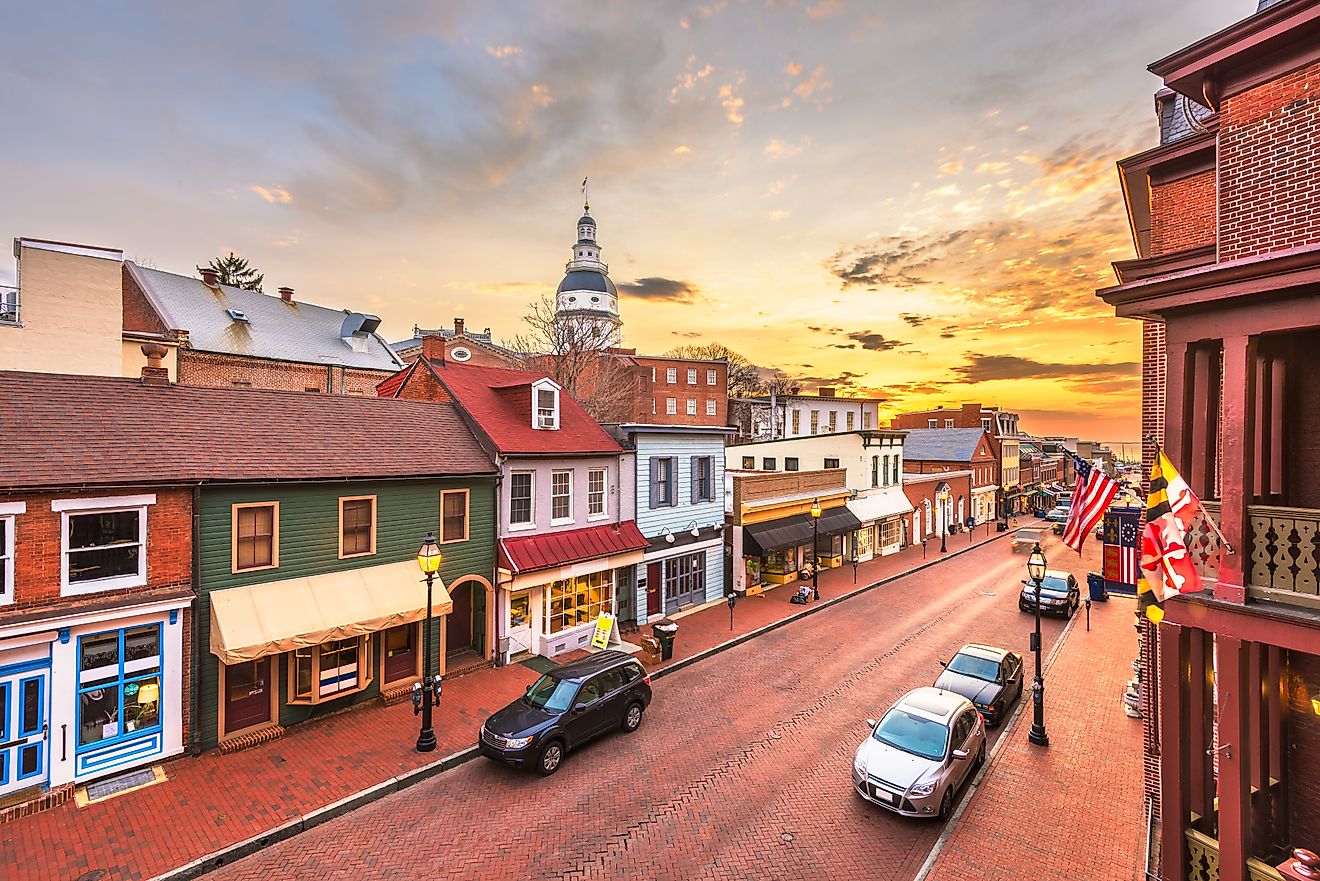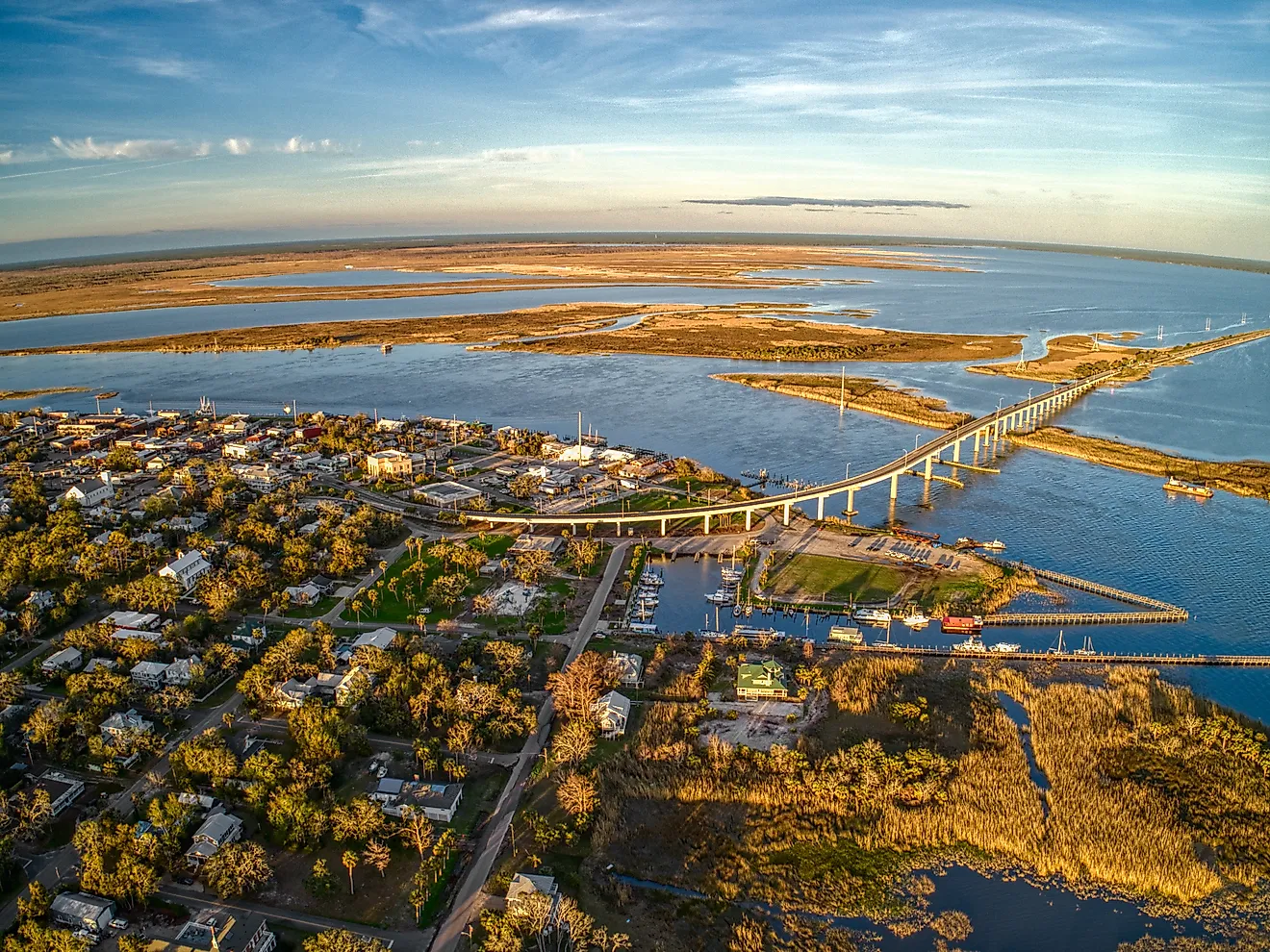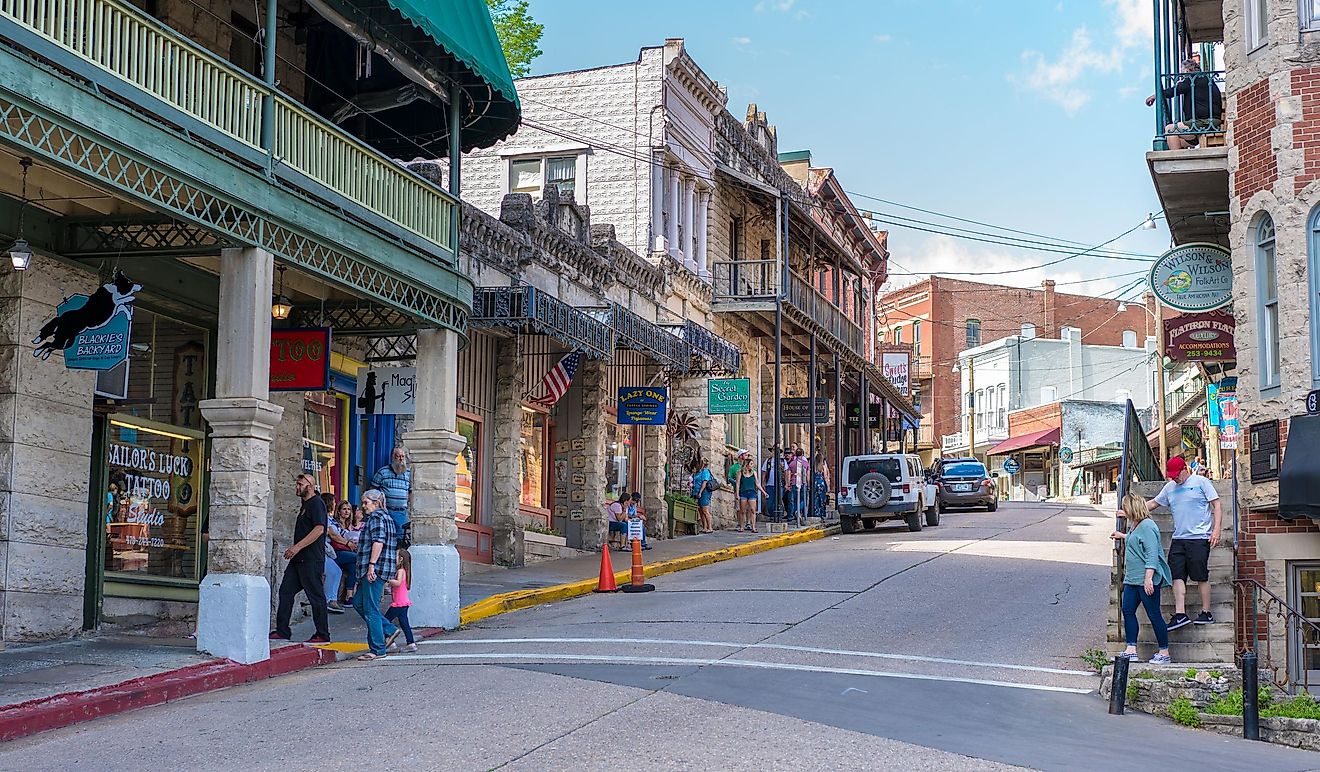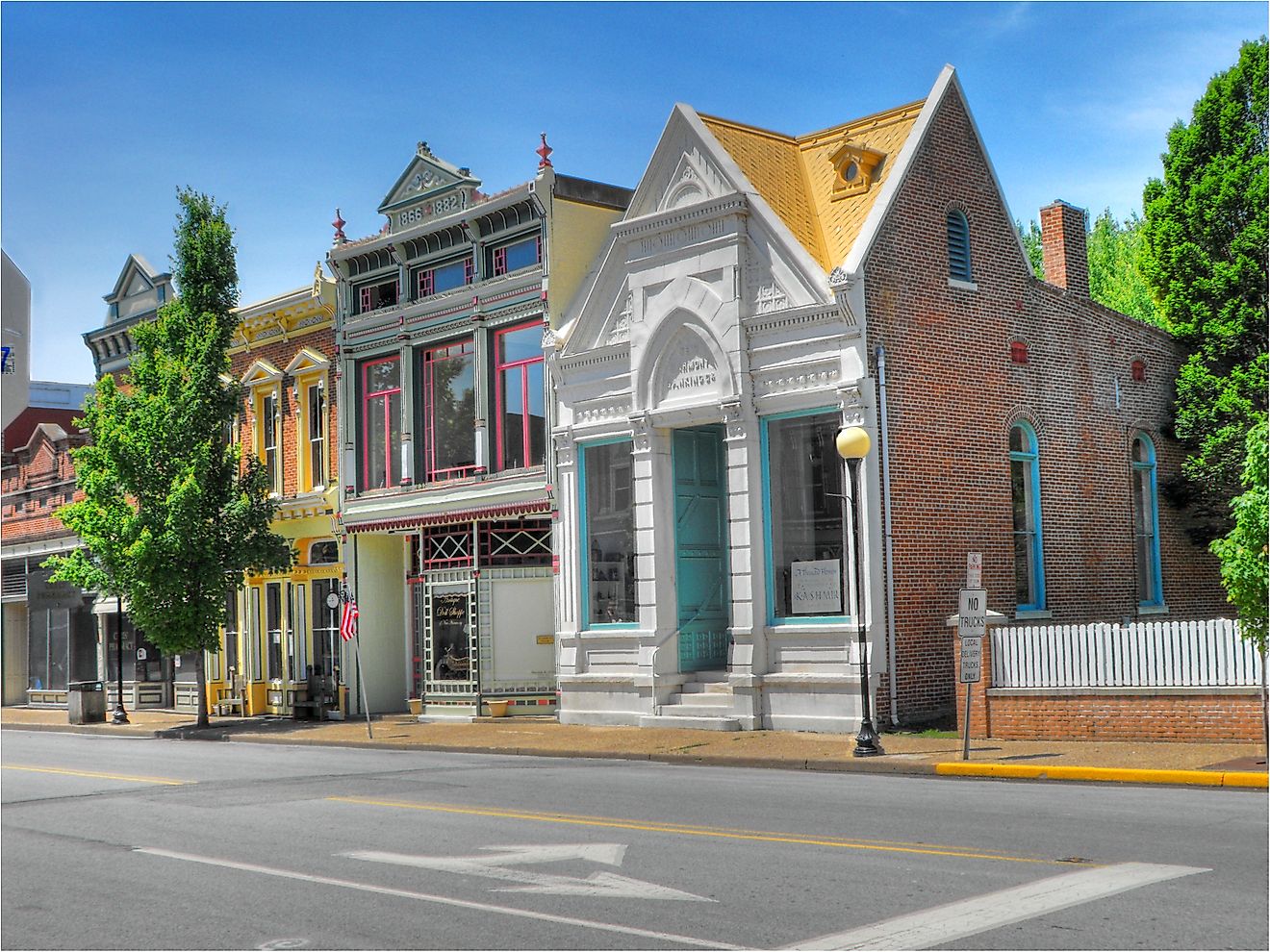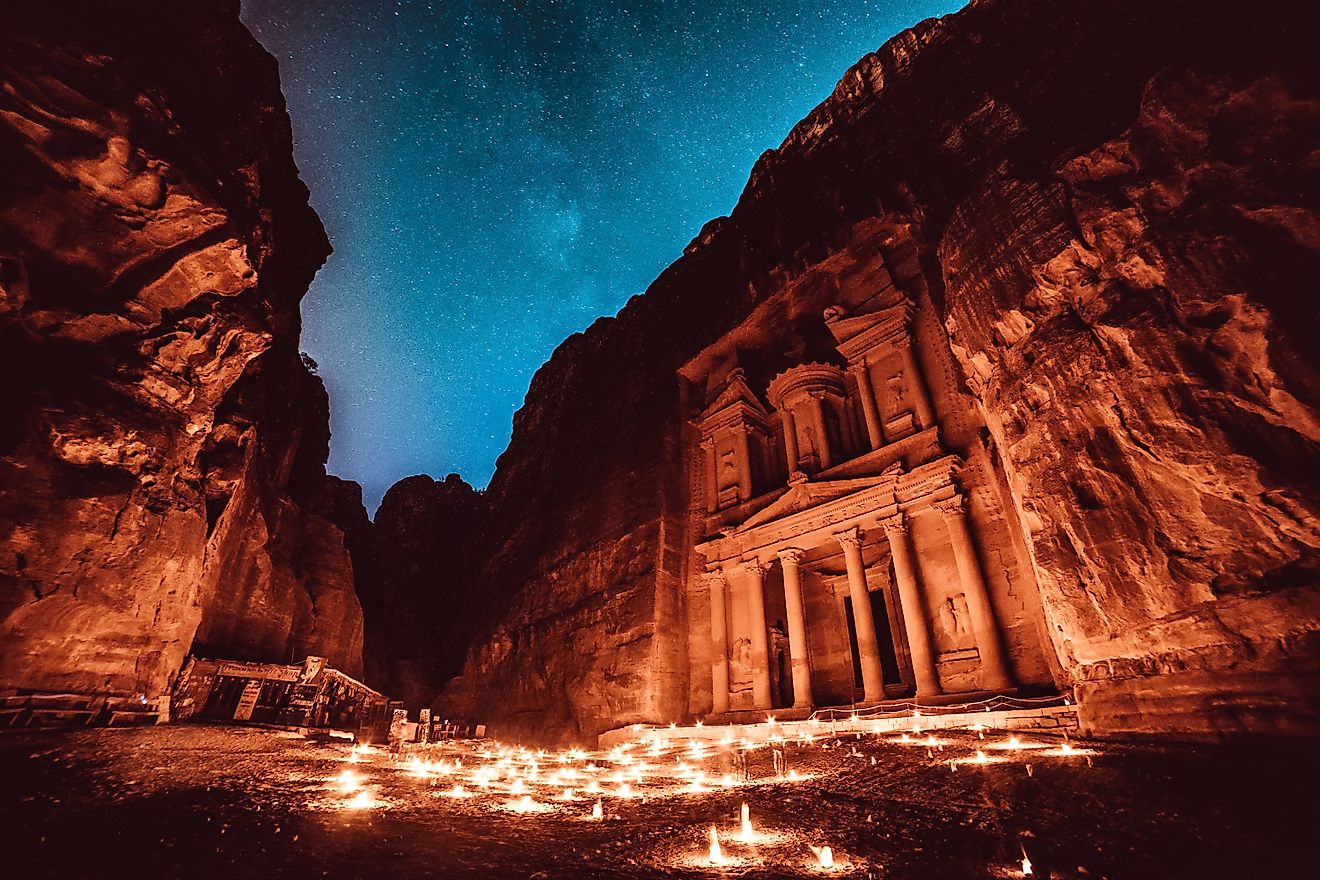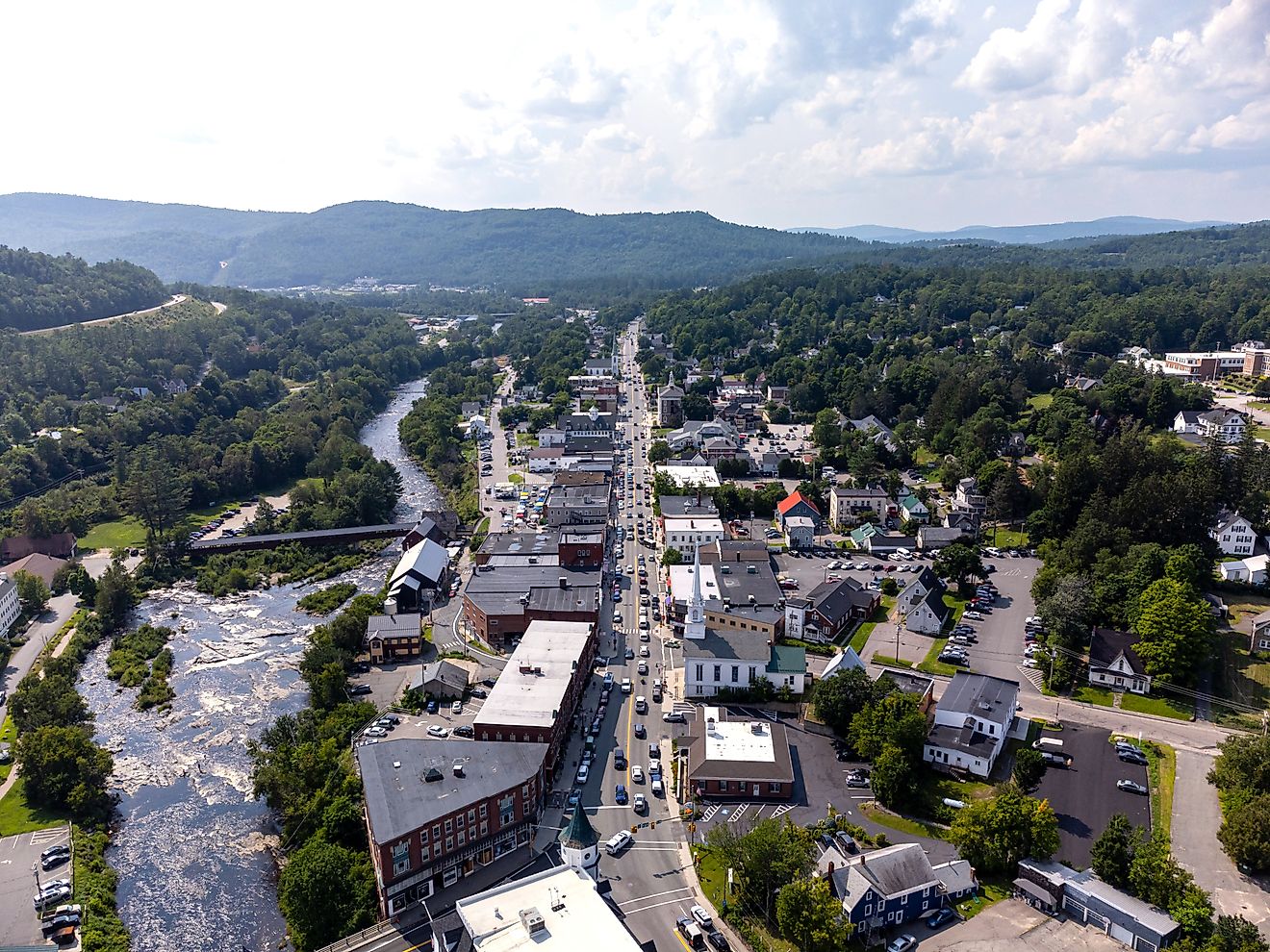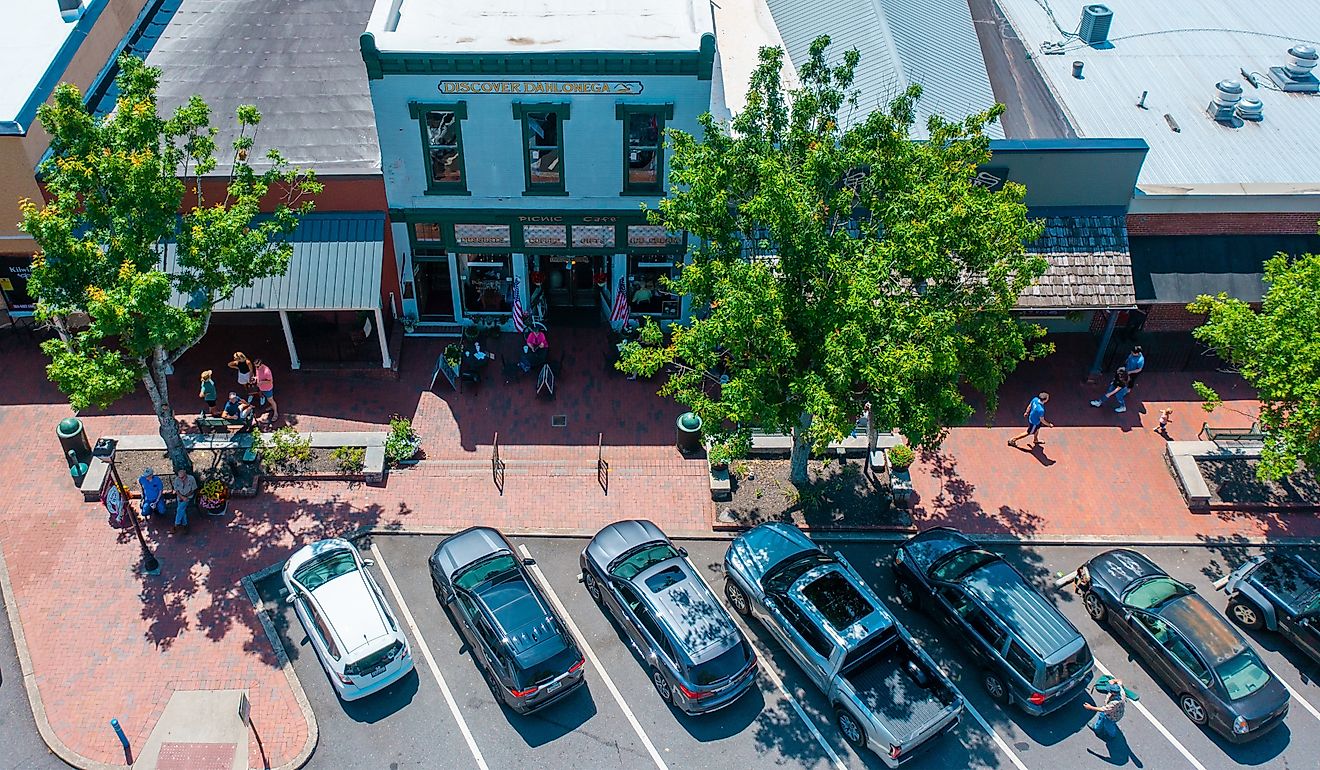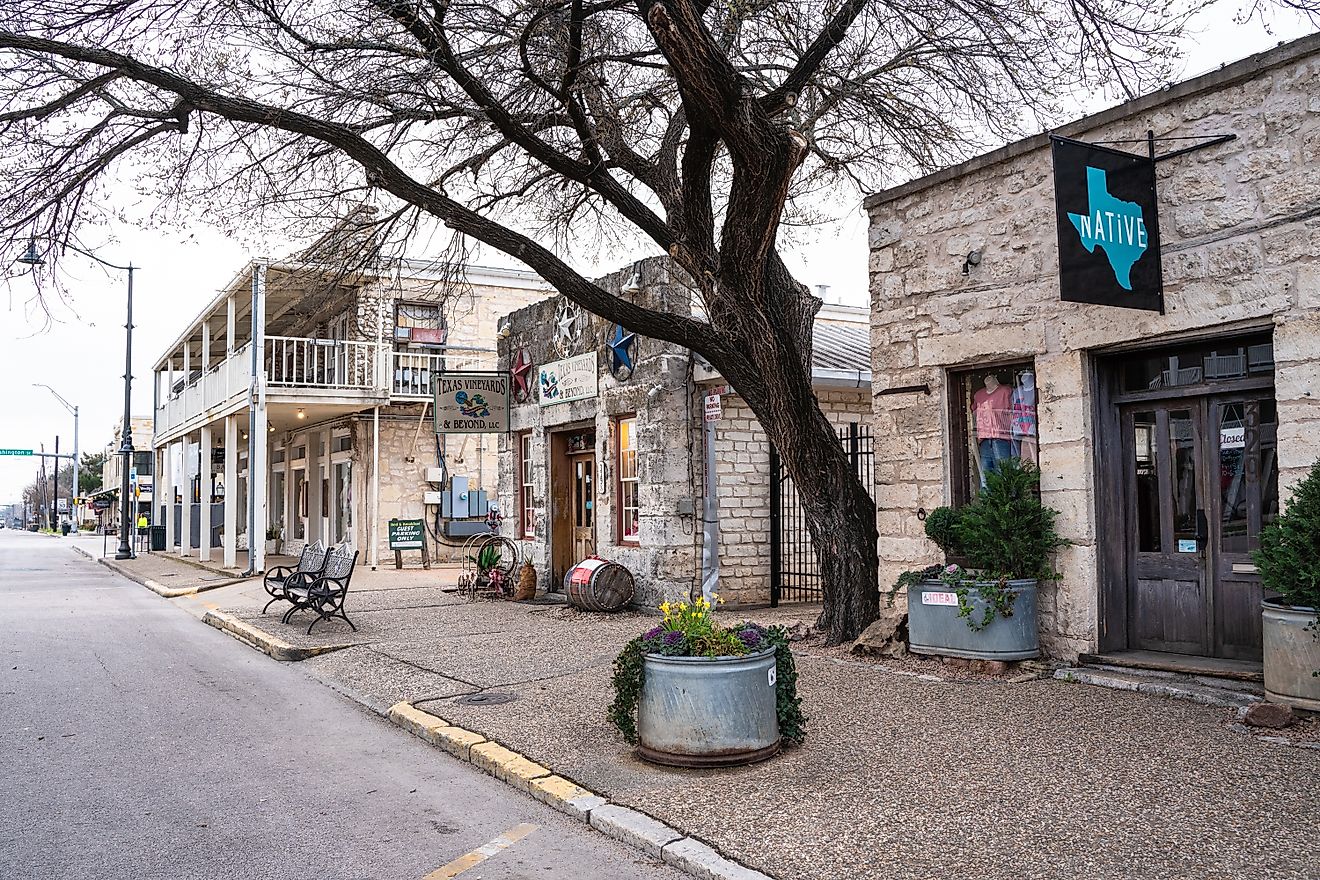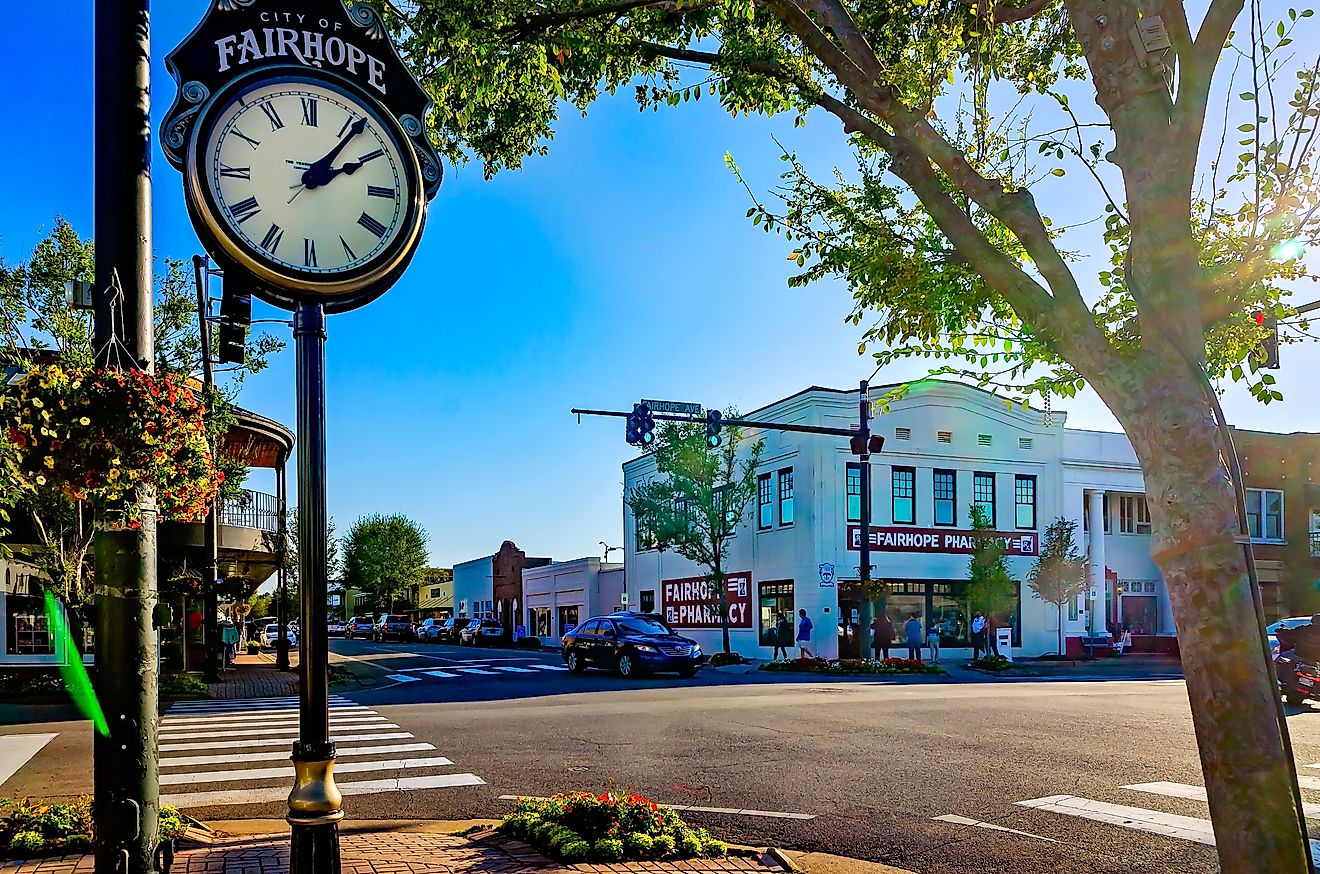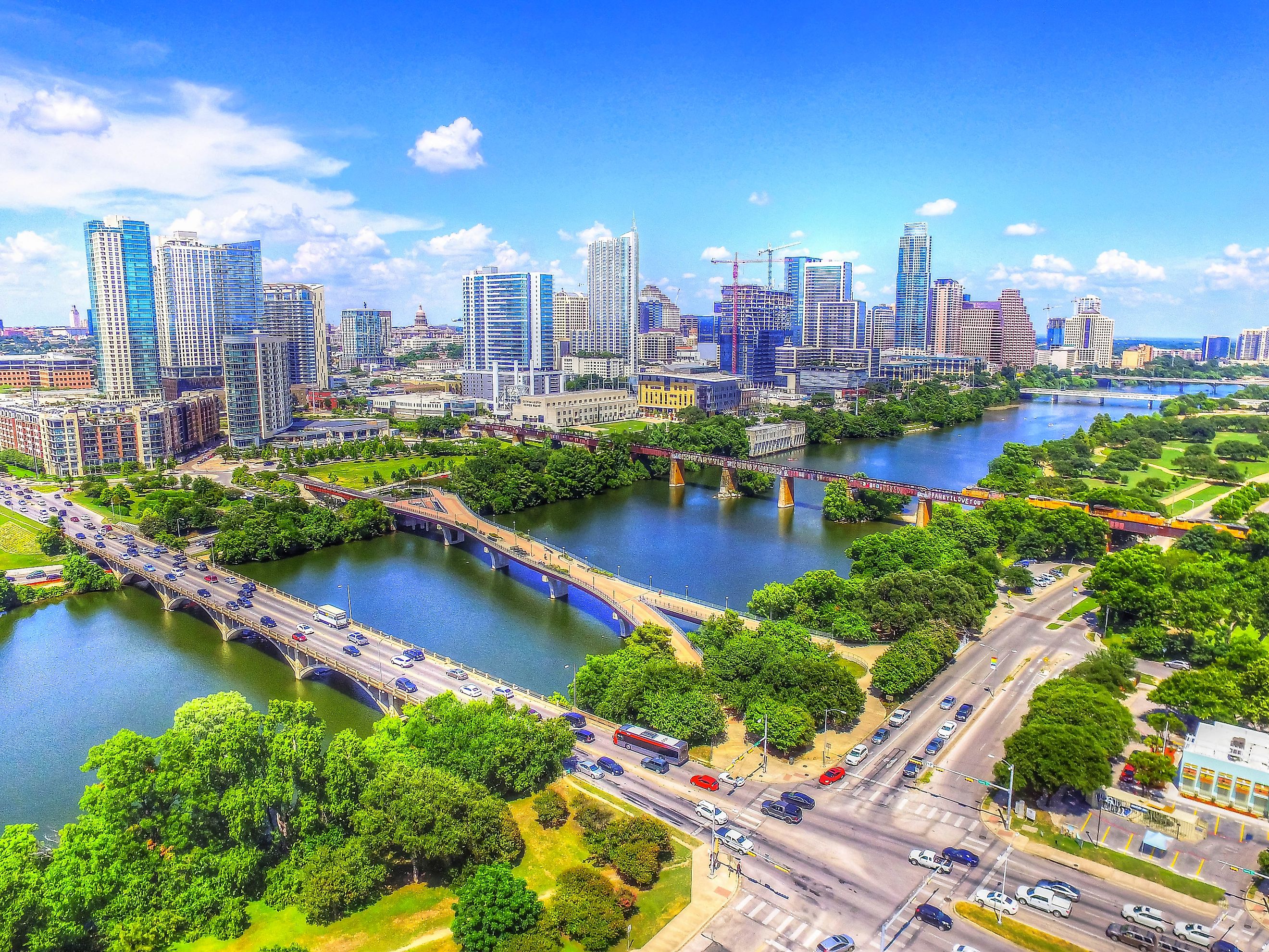
Austin, Texas
Austin, the county seat and largest city of Travis County, is a big city spread across the Travis, Hays, and Williamson counties in the US State of Texas. Placed at the base of the Balcones Escarpment on the Colorado River in the state’s south-central portion, Austin serves as the capital city of Texas. With a population of 965,872 inhabitants as per the latest US Census, Austin is also the state’s fourth-most populous city, the country’s 11th most populous city, and the second-most populous state capital city. Austin is considered a cultural and economic hub of the Austin-Round Rock-San Marcos Metropolitan Statistical Area. The city’s vibrant culture, exquisite cuisine, rich history, and various scenic spots have made it attractive for tourists and residents alike.
Geography Of Austin
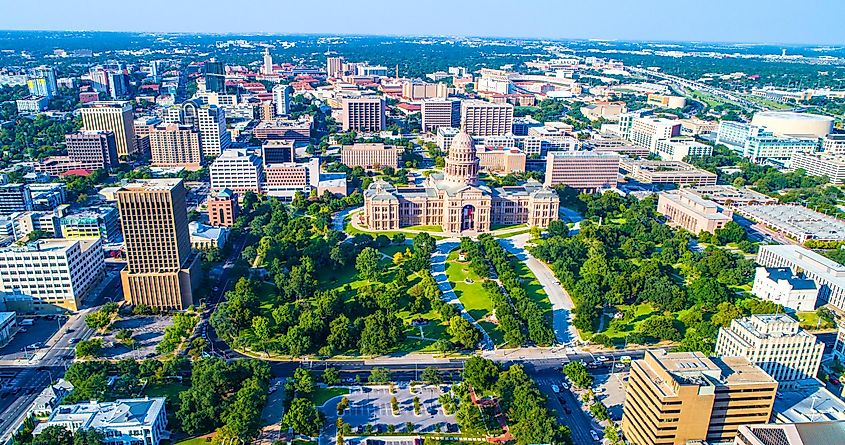
The southernmost state capital of the contiguous United States, Austin, is located in the Central Texas region, where the Colorado River crosses the Balcones Escarpment. The city is approximately 74 miles northeast of San Antonio, 146 miles northwest of Houston, and 182 miles south of Dallas. Austin covers a total area of 326.51 square miles, of which 319.94 square miles are occupied by land and 6.57 square miles are covered by water.
As the city straddles the Balcones Fault Zone, most of its eastern portion is flat and composed of heavy clay and loam soils. The city’s western portion and western suburbs on the Texas Hill Country’s edge are made up of rolling hills covered with a thin layer of topsoil. Austin is currently witnessing a skyscraper boom, and its central business district houses some of the state’s tallest condo towers. The city is home to several waterways, lakes, and rivers, such as Lady Bird Lake, McKinney Falls, Lake Austin, Lake Travis, Barton Springs, and Lake Walter E. Long.
Climate Of Austin
Austin is located at the heart of a unique transitional zone between the drier regions of the American Southwest and the green, humid areas of the American Southeast. Its climate, therefore, shares the characteristics of both regions. According to the Köppen Climate Classification, Austin experiences a humid subtropical climate with long, scorching summers and short, mild winters. The hot season lasts from June 3 to September 19, where August is the year’s hottest month, having an average high temperature between 96°F and 75°F. The cool season lasts from November 26 to February 22, where January is the coolest month, having an average low temperature between 43°F and 62°F. Austin receives an average of 34.2 inches of rainfall annually, with May, October, and June being the wettest months. Severe weather is quite common during the spring season, which occurs mainly in the form of large hail and strong winds. However, Tropical storms can occur several times per year, bringing damaging winds, heavy rain, and occasional flash flooding.
Brief History Of Austin
Archaeological evidences have revealed that the present-day area of Austin, Travis County, and Williamson County have been inhabited since at least 9200 BC by people belonging to the Clovis Culture. Before the arrival of the Europeans, the area was inhabited by indigenous tribes such as Tonkawa, Comanches, and Lipan Apaches. By the 1700s, the Spanish sent temporary Catholic missions to the area. Pioneers began settling in the area along the Colorado River during the 1830s. The Texas Congress formed a commission to find a site for the new capital of the Republic of Texas. In 1839, a site was chosen and incorporated under the name Waterloo. Shortly after, it was renamed Austin in honor of the renowned American-born empresario – Stephen F. Austin, who is also referred to as the “Father of Texas.”
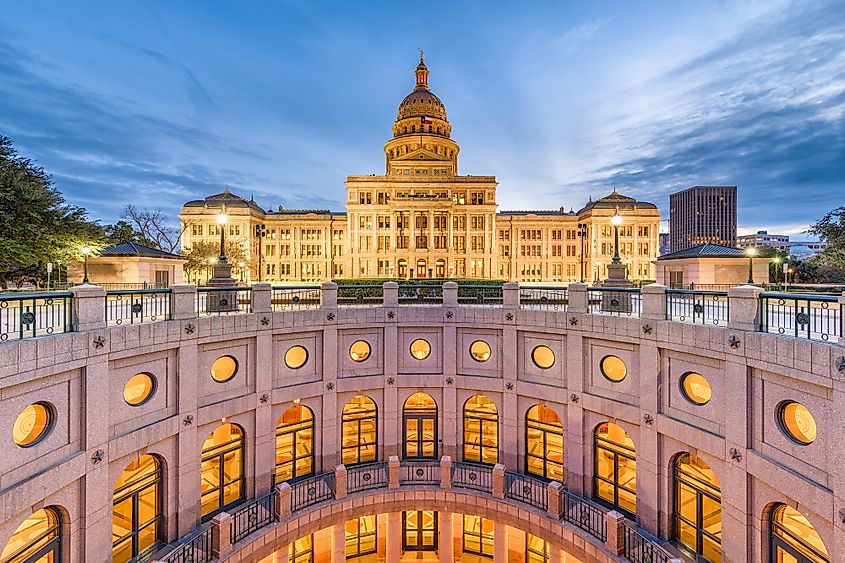
The city became a hub for government and education and grew rapidly throughout the 19th century. In 1842, fearing a Mexican invasion, the republic moved its seat of governance to Houston. However, the residents of Austin were determined and refused to give away official documents. In 1845, the fourth President of the Republic of Texas voted to keep Austin as the seat of governance and annex the Republic of Texas to the US. Austin became the region’s major trading center with the commencement of the Houston and Texas Central Railway in 1871. The city resumed its steady development after the Great Depression, transforming into one of the state’s major metropolitan centers by the mid-20th century.
Population And Economy Of Austin
As per the latest US Census, Austin has a population of 965,872 inhabitants with a median age of 33.7 and a population density of 3,006 inhabitants per square mile. The top ethnic groups in the city are White (Non-Hispanic) at 48.2%, White (Hispanic) at 21.2%, Asian (Non-Hispanic) at 7.65%, Other (Hispanic) at 7.58%, and Black (Non-Hispanic) at 7.4%. About 88.4% of Austin’s residents are U.S. citizens, and the average car ownership in the city is two cars per household.
Austin has a median household income of $75,752, and a median property value of $358,600. The city’s diverse economy employs about 562,589 people. The most prominent industries in Austin include Professional, Scientific, & Technical Services, followed by Educational Services and Retail Trade. Some of the largest universities in Austin are The University of Texas at Austin, Saint Edward’s University, and Austin Community College District. Austin is often nicknamed “Silicon Hills” due to its high number of technology and development companies. In addition, the city has also emerged as a center for pharmaceutical and biotechnology companies in recent years.
Attractions In And Around Austin
Blanton Museum of Art
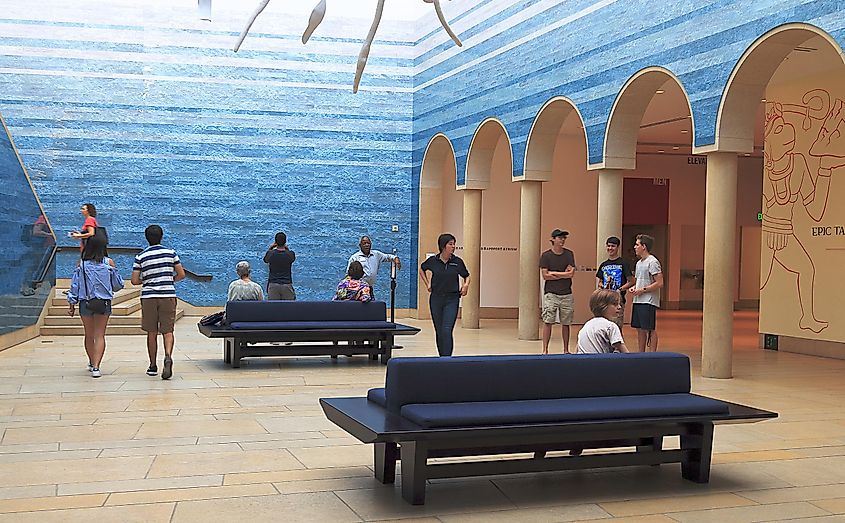
Located on the campus of the University of Texas at Austin, the Jack S. Blanton Museum of Art is one of the country’s biggest university art museums. Established initially as the University Art Museum in 1963, the permanent collection of the museum exhibits over 21,000 artistic pieces and is well-known for its European paintings, conceptual art, minimalism, and contemporary American and Latin American artwork. Some renowned artists whose works are exhibited in the museum include Thomas Hart Benton, Natalie Frank, Tavares Strachan, Donald Moffett, Byron Kim, Charles White, and many more. It is estimated that as of 2019, more than 200,000 visitors have visited the Blanton Museum of Art.
Bullock Texas State History Museum
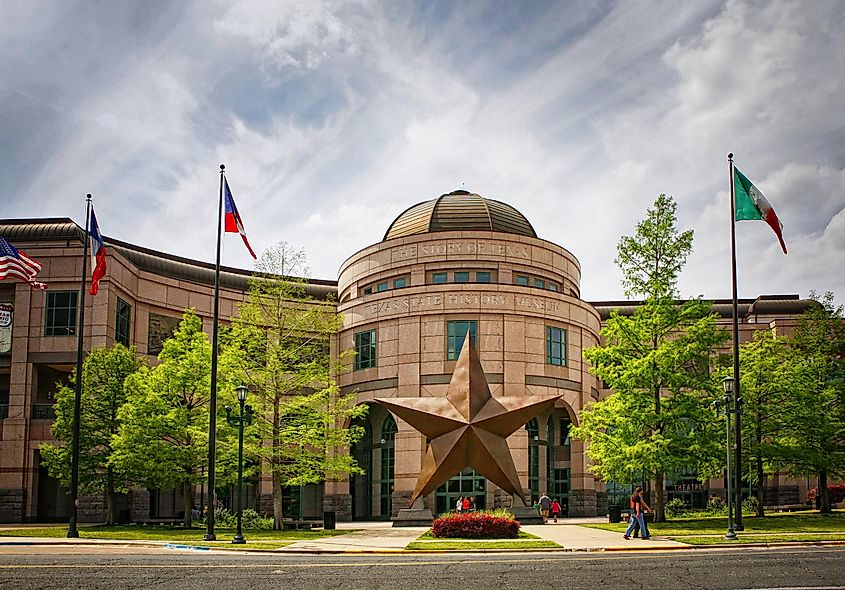
Named after Bob Bullock, who served as the 38th Lieutenant Governor of Texas, this history museum is situated a few blocks north of Texas State Capitol. Managed by the Texas State Preservation Board, the museum showcases exhibits exploring over 16,000 years of Texas history. The exhibits at the museum also tell stories about early American Indian civilizations that inhabited the area before the advent of the Europeans and the global political situations that influenced both the state as well as the city's growth. The museum's third floor has sections dedicated to the state's science and space exploration, ranching, civil rights, sports, and music. The museum hosts many large-scale community events throughout the year, including American Indian Heritage Day, H-E-B Free First Sunday, and Spooktacular.
Zilker Metropolitan Park
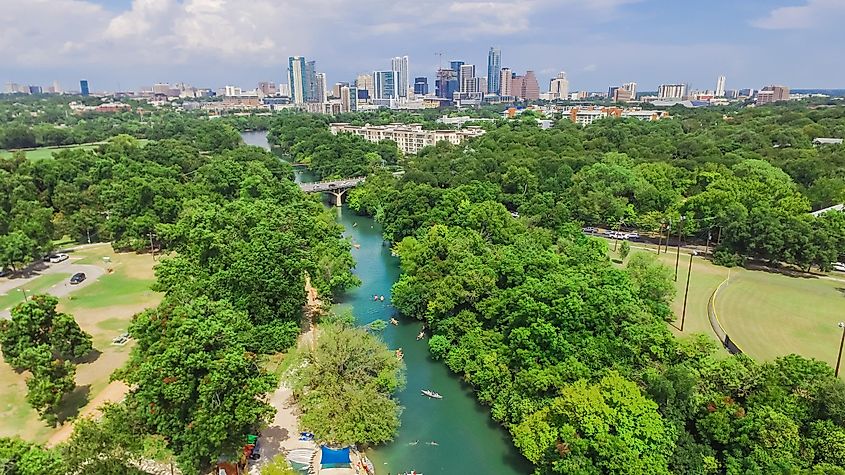
Located at the meeting point of the Colorado River and Barton Creek, this recreational area is spread over 350 acres of publicly owned land. Named after the philanthropist Andrew Jackson Zilker, this park serves as a center for various recreational activities. The park has acres of green space, hiking and biking paths, several big picnic spots, a nine-hole disc golf course, and two multi-use playgrounds. In addition, the park also houses the Barton Springs Pool, the Zilker Hillside Theater, the Zilker Zephyr, Austin Nature & Science Center, Umlauf Sculpture Garden, and the Zilker Botanical Garden.
In keeping up with its official slogan, “The Live Music Capital of the World,” the city hosts many concerts and festivals at its live music venues. Every year in mid-March, Austin hosts “South by Southwest,” an assortment of concurrent films, interactive media, music festivals, and conferences. Some other annual events include Austin Pride Festival & Parade, Austin City Limits Music Festival, Texas Craft Brewers Festival, and many more. The vibrant annual festivals, scenic locales, and delicious cuisine at famed restaurants ensure a quality time for the tourists visiting the capital city of Texas.
